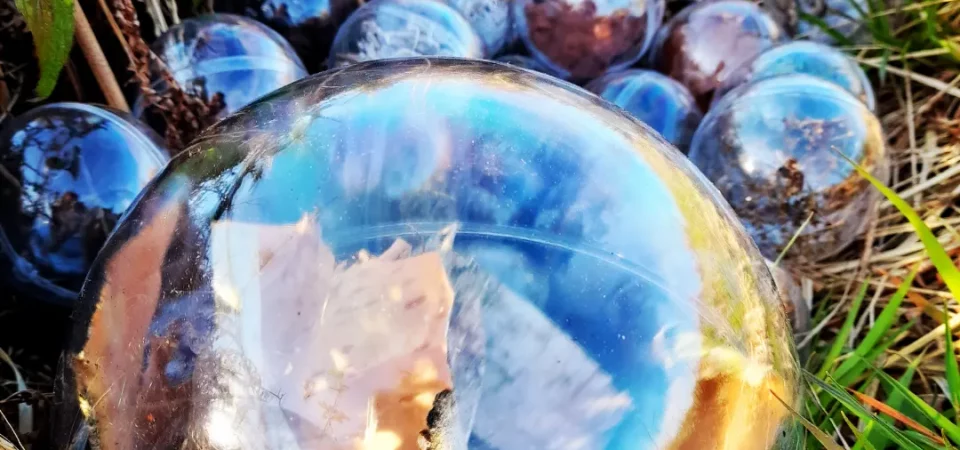I hadn’t been on a bogland since I was a child. And that was just to use it as a playground. Growing up in Ireland, they were places associated with hard labour, family ties, old men stooped over, duty, and a smell that is unique and, dare I say it, really comforting and beautiful.
I now carry the family guilt. Many families still have a slice of bog they call their own, passed down through generations. In a country with no oil, no coal, and a limited supply of gas, cut turf was as close as we got to energy self-sufficiency. It was a common sight to see turf piled up at the side of a house, to help see a rural Irish winter through.
Bogs are an important part of Irish culture and national identity.
Artists were inspired by them. Poet Laureate Seamus Heaney reflected on the act, or the art, of turf cutting in his poem Digging.
My grandfather cut more turf in a day
Than any other man on Toner’s bog.
Once I carried him milk in a bottle
Corked sloppily with paper. He straightened up
To drink it, then fell to right away
Nicking and slicing neatly, heaving sods
Over his shoulder, going down and down
For the good turf. Digging.
The cold smell of potato mould, the squelch and slap
Of soggy peat, the curt cuts of an edge
Through living roots awaken in my head.
But I’ve no spade to follow men like them.
Between my finger and my thumb
The squat pen rests.
I’ll dig with it.
Seamus Heaney, from “Digging” in Death of a Naturalist (1966)
Fast forward 40 years, and I find myself as Artist in Residence on the boglands of County Tyrone.
My bog, as I now feel it is, is a disputed but protected bog, nestled in between a school, a church, and a large area of bogland being commercially extracted for peat.
When a bog is drained or otherwise disturbed—in the course of commercial extraction, or domestic cutting, the peat begins to dry and decompose, releasing the carbon it has accumulated over thousands of years.
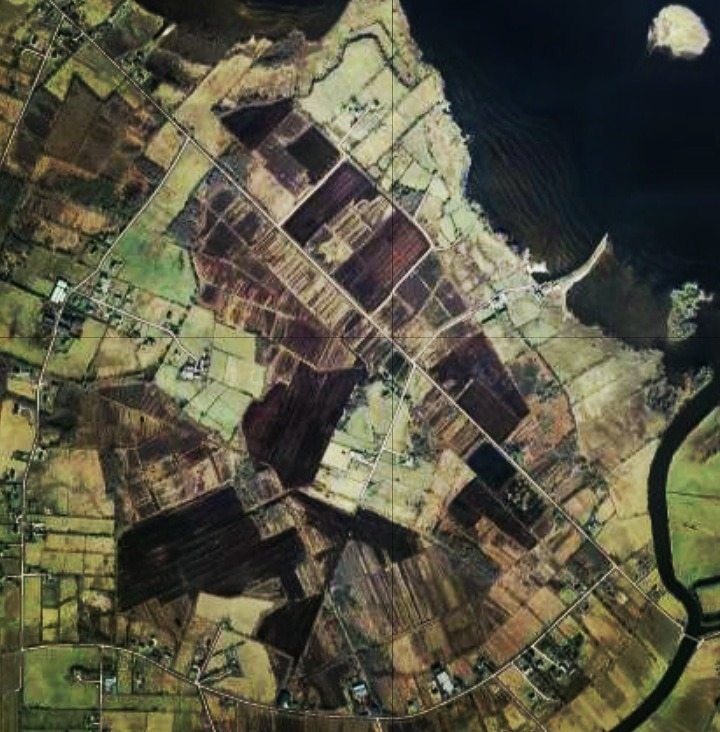
‘My Bog’ Derrytresk Bog, County Tyrone, 2021, an ariel image of the bog, the black areas are commercially cut spaces where peat is being extracted for sale.
I was told to tread carefully when I started my residency, physically and metaphorically.
I was to work with the people in the area and in the school, where lots of the fathers of the children were employed by the commercial peat extraction company. There was an unwritten and unspoken agreement that the untouched beautiful blanket bog could sit alongside the scarred and scraped ‘commercial’ bog if neither side bothered the other. My bog was protected by the environmental development organisation who had commissioned me.
My role was to shout from the rooftops about it’s beauty and it’s value, through my art.
The arts have always helped in visioning a new future. It has helped us to make meaning of our own unique changing worlds. The work I was asked to do was about personal place-making and connection and care for our locality. I believe art is the perfect vehicle to create these interventions and visions.
For 2 years, I treaded carefully, working with local community groups, the fabulous local school, the church, and the wider rural community. We had outdoor painting sessions, indoor sculpture sessions, nature walks, talks, we ate on the bog and from the bog (bog cranberries, who knew?), and we heard stories of the bog from all generations.
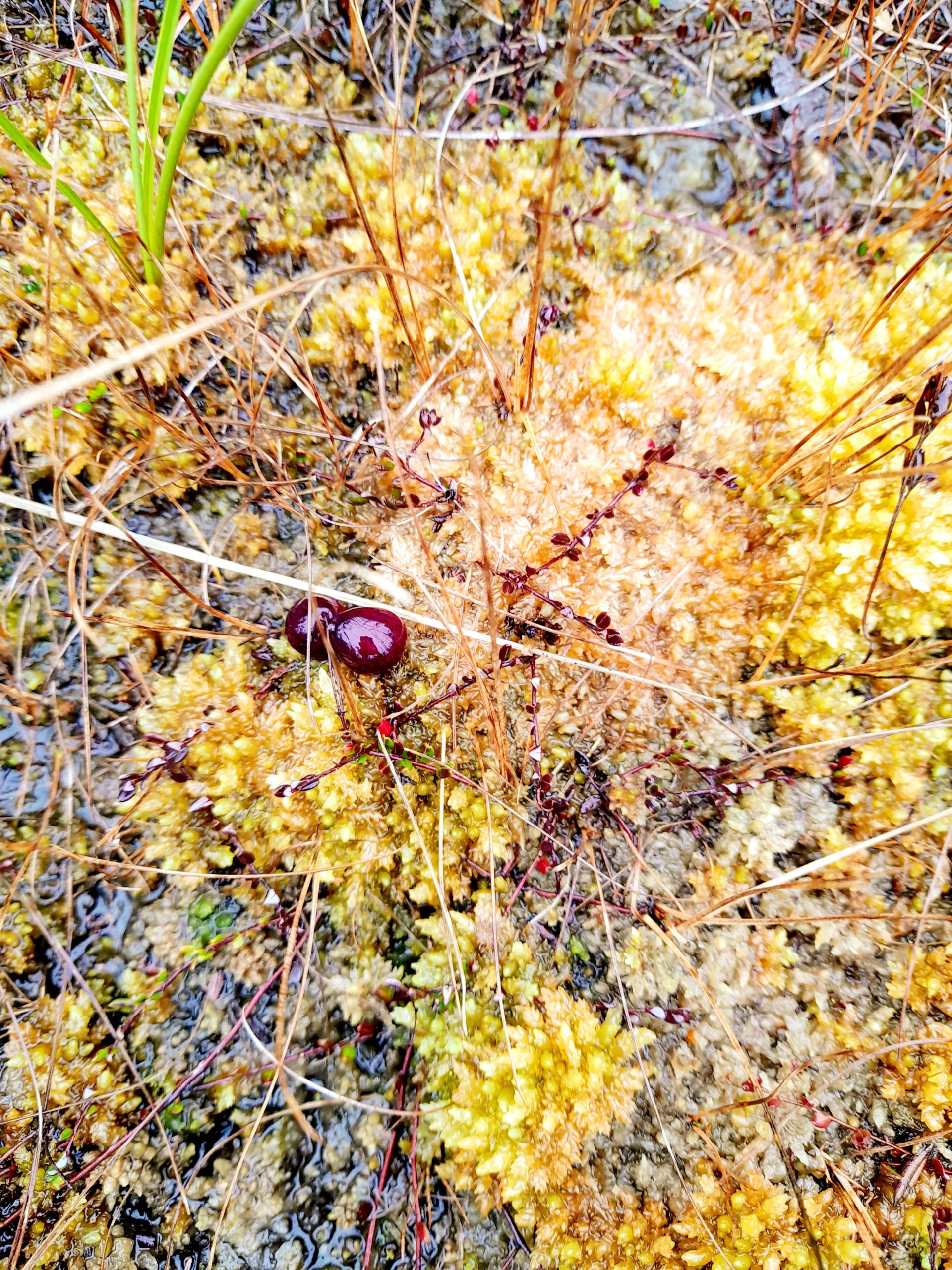
Bog Cranberries on Derrytresk Bog
At one time, peatlands covered almost one-fifth of the Irish landscape, and with most commercial bogs now set to close, the question is what this land will now become.
There is a long social and cultural history of the peatlands in the area but not a culture of protection or preservation of the area. I was engaged to help create a new vision of the land through arts interventions. Sometimes the process and the journey of making art in public places is just as important as the final product, the connections and the learning together are as valuable as the art.
In the final six months of my residency I created a temporary environmental art trail on a section of the bog. Each of the temporary 15 sculptures and installations on the trail were based on the Endangered Species List for Northern Ireland, 481 mammals, insects and plants are on this list. It’s an old list, due to be updated, and probably triple in number.
Blue Eyed Grass is on the list, it’s a kinetic sculpture that moves with the wind. I wanted to encourage people to look at the smaller living things on the bog, and to use the boglands in a different way, and to highlight the environmental ticking clock for the area. I now had an art trail to do that, so I invited everyone involved, and lots of people who weren’t. I created the roles of Bog Ambassadors for the children at the school.
Suddenly everyone wanted a title and the children were spotting all sorts of species on the site, from bog frogs to mermaids. I’m still not convinced about the Lesser Spotted Irish Bog Mermaid, but I’m willing to be convinced.
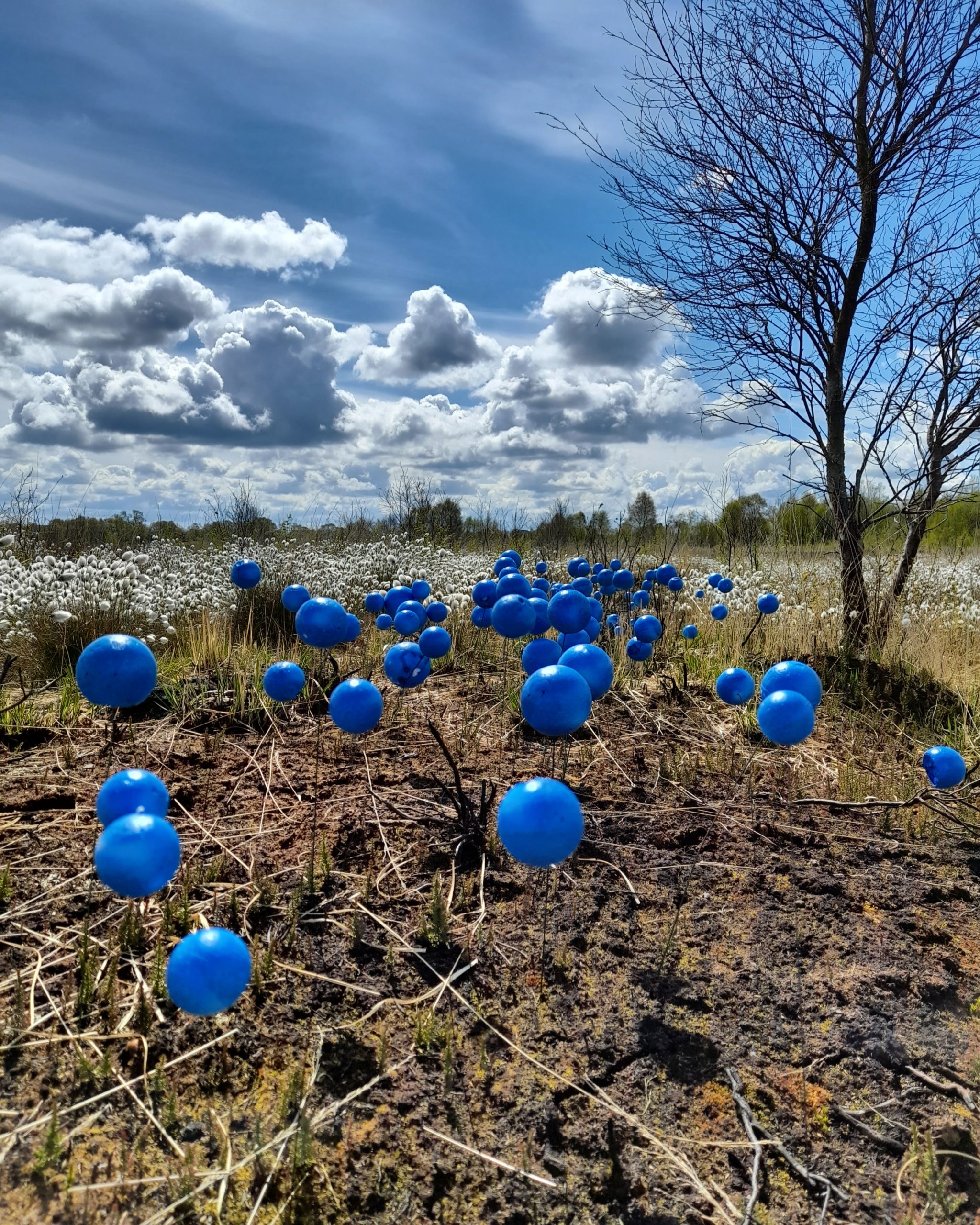
Blue Eyed Grass on the boglands of County Tyrone, temporary kinetic installation, 2021, 20ft x 5ft
The trail won an award. A Social Art Award from The Institute for Art & Innovation in Berlin.
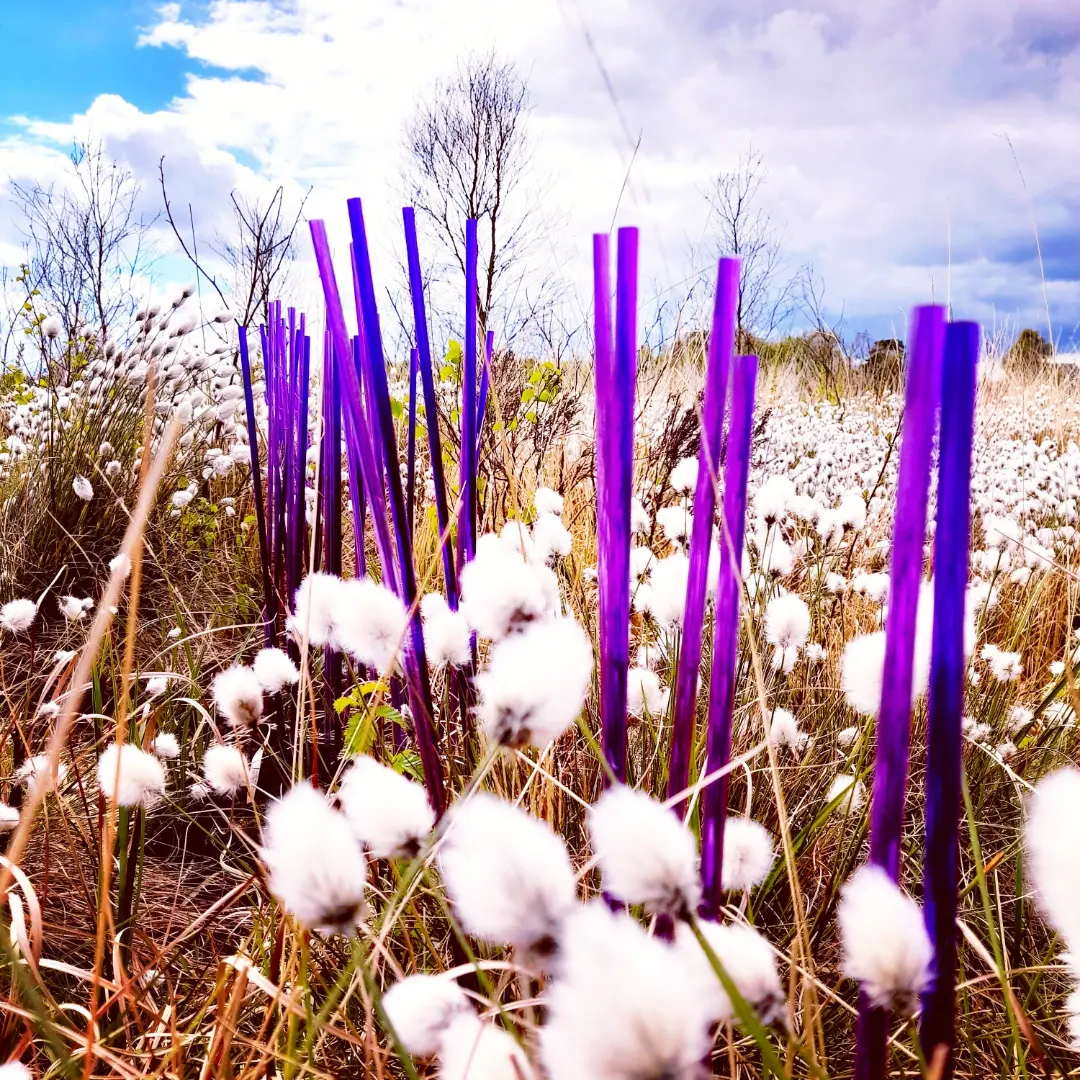
Purple Bog Grass installation among the bog cotton, 2021
I am still shouting from the rooftops about the bog. So when I joined the Post Carbon Institute’s ‘Think Resilience’ course, I saw the What’s Next For Earth participatory art project calls for Culture Change and also Shifting Cultural Stories, and I submitted 2 installations from the boglands art trail to the calls. The art calls and the course are a fabulous resource and a heartening online community of artists and activists. It’s a way of collaborating and connecting and feeling like I’m a small cog in a big beautiful activist wheel. Even from this small corner of Ireland.
It’s great to collaborate, in the art calls, in art making, in new sectors. By joining forces with education, community, farming, and environmental protection sectors, this work encouraged a more interdisciplinary approach to tackle the future protection of our boglands.
I hope my work is about people working together to create change through art, tackle issues together, and take creative risks to create new and better ways to live. In a world focused on economic survival, engagement in the arts has never been more vital for self-expression and allowing communities to live creative, caring, sustainable lives.
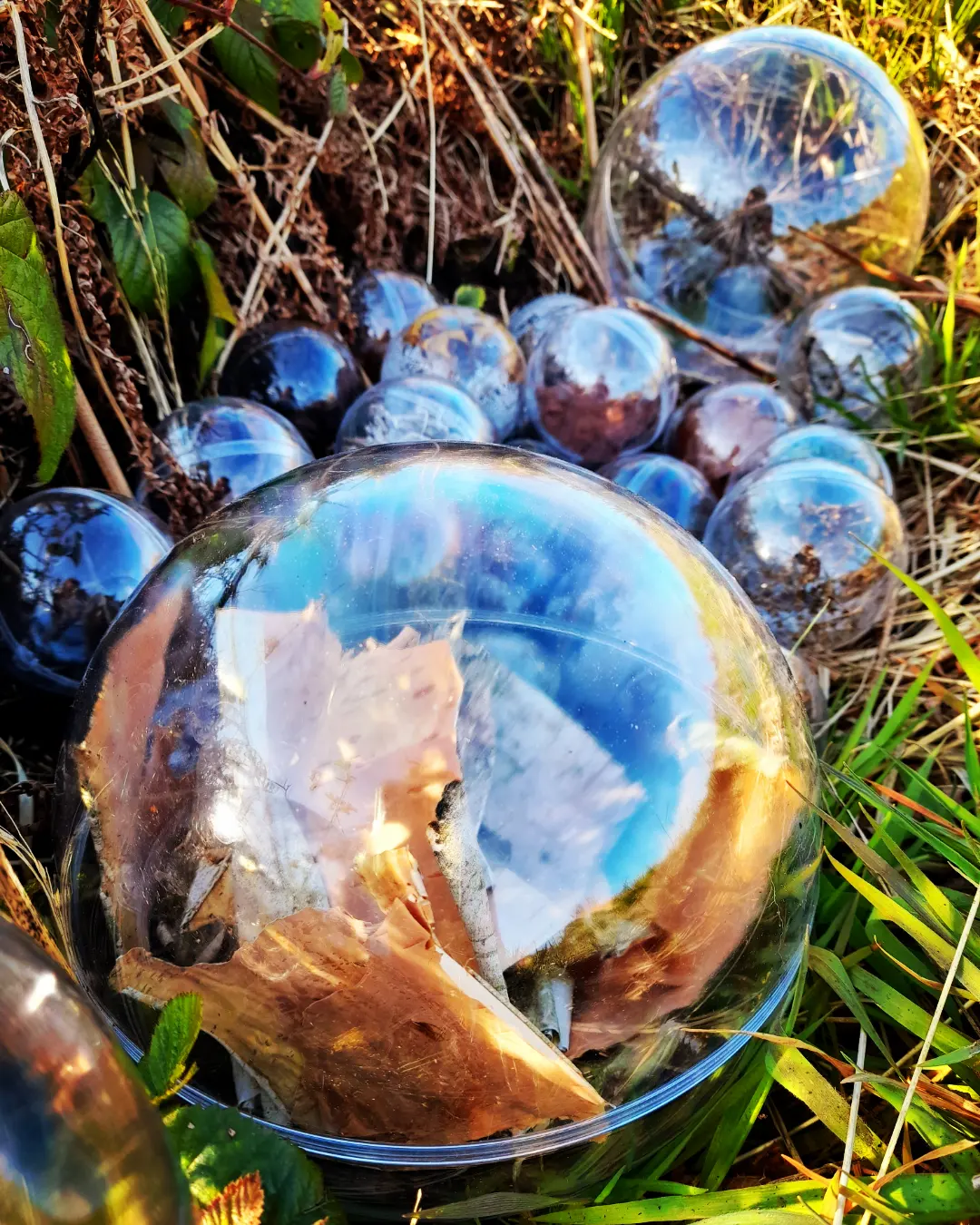
Seedbank Installation, Derrytresk Bog, 2021, acrylic globes containing fallen and dead plant and seed samples from the area
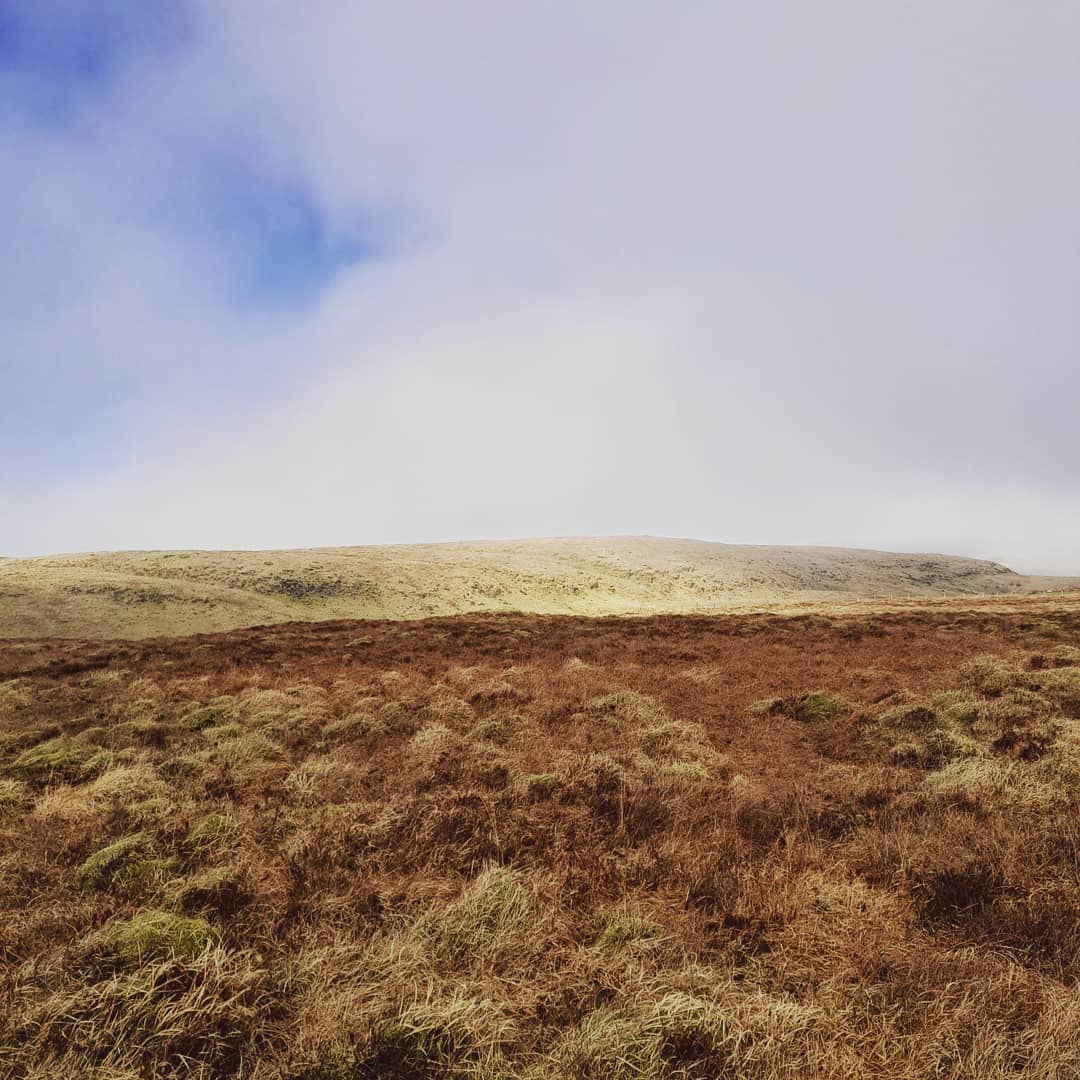
Slievenanee Bog, translates as Mountain of the Warriors
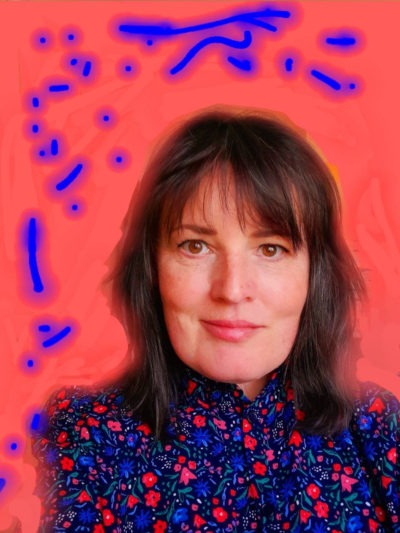 Rosalind Lowry is an award-winning artist from Ireland who works with a range of media to create site-specific land art, installations, and sculpture. She attended Chelsea School of Art and St. Martin’s School of Art in London, and in 2021 she was made a Member of The Royal Society of Sculptors. Through numerous solo and collaborative projects, she has delivered works internationally and across Ireland, and she has just completed a 2-year Artist in Residence project on the peatlands of County Tyrone for the UK Heritage Lottery and Lough Neagh Partnership, delivering a series of site-specific sculptures and installations on the peatlands.
Rosalind Lowry is an award-winning artist from Ireland who works with a range of media to create site-specific land art, installations, and sculpture. She attended Chelsea School of Art and St. Martin’s School of Art in London, and in 2021 she was made a Member of The Royal Society of Sculptors. Through numerous solo and collaborative projects, she has delivered works internationally and across Ireland, and she has just completed a 2-year Artist in Residence project on the peatlands of County Tyrone for the UK Heritage Lottery and Lough Neagh Partnership, delivering a series of site-specific sculptures and installations on the peatlands.
The main influences on her work are the historical human commodification of the land by man, the disappearing Irish landscape and its heritage and folklore, leading to ecological destruction and social conflict, and the presence and labour of women in the Irish landscape.
Her focus is working in response to place and using art as an intervention. This has led her to create large-scale site-specific work for regional environmental and nature preservation organizations.
The majority of her work is temporary, in the form of installations. These pieces will then be dismantled and reused in future works, thus creating a lineage and root system throughout her practice, where materials from works made several years ago can still live on in new pieces.
Scale is an important feature of her work, and pushing the materials used, and although her work is created to highlight issues, she would always hope to deliver this as a poetic and beautiful conclusion, paying tribute to the land, heritage, and resilience of the subject.
Website: rosalindlowryartist.com
Instagram: @rosalindlowry
Email: roslowry16@hotmail.co.uk
Rosalind Lowry participated in the online talk “What’s Next for Earth + Think Resilience,” hosted in May 2022 by Ecoartspace with Richard Heinberg. The video of the event is here.
This article is part of the MAHB Arts Community‘s “More About the Arts and the Anthropocene”. If you are an artist interested in sharing your thoughts and artwork, as it relates to the topic, please send a message to Michele Guieu, Eco-Artist and MAHB Arts Community coordinator: michele@mahbonline.org. Thank you. ~

